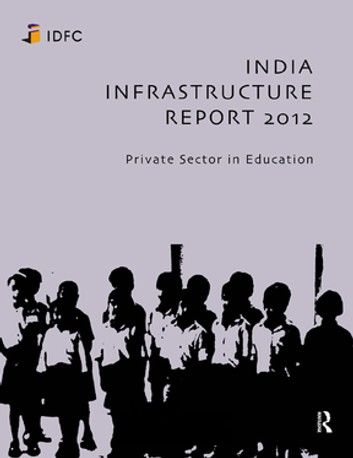| FindBook |
有 1 項符合
India Infrastructure Report 2012的圖書 |
 |
India Infrastructure Report 2012 作者:Idfc Foundation 出版社:Taylor & Francis 出版日期:2016-04-08 語言:英文 |
| 圖書館借閱 |
| 國家圖書館 | 全國圖書書目資訊網 | 國立公共資訊圖書館 | 電子書服務平台 | MetaCat 跨館整合查詢 |
| 臺北市立圖書館 | 新北市立圖書館 | 基隆市公共圖書館 | 桃園市立圖書館 | 新竹縣公共圖書館 |
| 苗栗縣立圖書館 | 臺中市立圖書館 | 彰化縣公共圖書館 | 南投縣文化局 | 雲林縣公共圖書館 |
| 嘉義縣圖書館 | 臺南市立圖書館 | 高雄市立圖書館 | 屏東縣公共圖書館 | 宜蘭縣公共圖書館 |
| 花蓮縣文化局 | 臺東縣文化處 |
|
|
Today, India’s education sector remains a victim of poor policies, restrictive regulations and orthodoxy. Despite being enrolled in schools, children are not learning adequately. Increasingly, parents are seeking alternatives through private inputs in school and tuition. Students are dropping out from secondary school in spite of high financial returns of secondary education, and those who do complete it have inferior conceptual knowledge. Higher education is over-regulated and under-governed, keeping away serious private providers and reputed global institutes. Graduates from high schools, colleges and universities are not readily employable, and few are willing to pay for skill development. Ironically, the Right to Education Act, if strictly enforced, will result in closure of thousands of non-state schools, and millions of poor children will be left without access to education.
Eleventh in the series, India Infrastructure Report 2012 discusses challenges in the education sector — elementary, secondary, higher, and vocational — and explores strategies for constructive change and opportunities for the private sector. It suggests that immediate steps are required to reform the sector to reap the benefits from India’s ‘demographic dividend’ due to a rise in the working age population.
Result of a collective effort led by the IDFC Foundation, this Report brings together a range of perspectives from academics, researchers and practitioners committed to enhancing educational practices. It will be an invaluable resource for policymakers, researchers and corporates.
|










